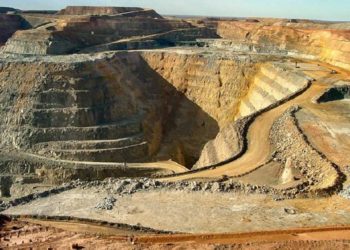The world’s largest mining company BHP Billiton Ltd. (BHP) said it’s shifting the focus of investments in new projects to copper from iron ore to meet demand from China, its biggest customer.
“As we go forward, we’re likely to invest a lot more in copper than we are in iron ore,” Chief Executive Officer Andrew Mackenzie told reporters in Shanghai today. The company expects to increase copper sales to China more than iron ore and will invest in mines in Chile, Peru, South Australia and North America, he said.
The world’s biggest iron ore producers including Vale SA, Rio Tinto Group and BHP have spent about $120 billion since 2011 expanding output at record pace to feed unprecedented demand from Chinese steel mills. That’s fed a glut, plunging the price of the raw material to a five-year low last month.
“We expect growth in demand for copper in China to be faster than growth in demand for steel and then for iron ore as China moves more into a consumption phase and uses a lot more electricity,” Mackenzie told Chinese reporters. “As your patterns of demand growth change, we will change our patterns of investment to supply and meet that demand.”
BHP has invested $13.3 billion, or 17 percent of the group’s total spending, in copper operations over the last five years, according to a presentation last month. The world’s copper market will probably see a “significant deficit” beyond 2018, it said.
Commodities Supercycle
Goldman Sachs Group Inc. this year joined other banks in calling an end to the commodities supercycle as China slows. The biggest consumer of industrial metals and iron ore and the largest oil user after the U.S. is headed for the slowest full-year expansion since 1990.
After a decade of price gains fueled by Chinese demand, often defined as the commodities supercycle, miners have been contending with slower growth by shunning mergers, reducing spending and cutting costs.
As prices tumble, analysts predict declining profit at BHP. That’s led some to forecast it will have difficulty meeting its dividend payment next year without taking on debt. BHP’s net income is forecast to fall 22 percent to $10.7 billion in the year to June 30, according to the mean of 19 analyst estimates compiled by Bloomberg.
Along with slowing growth, miners are also contending with a shift in the consumption pattern of its most important customer.
Declining Demand?
As China moves to a consumer-led from an investment-led economy, there may be a substantial absolute drop in commodities demand, not just slower growth, Tao Dong, chief regional economist for Asia excluding Japan at Credit Suisse Group AG in Hong Kong, said in an interview last week, without referring to particular companies.
Iron ore has tumbled almost 50 percent this year and fell below $70 a metric ton on Nov. 25 for the first time since June 2009. The market needs to absorb a surplus of about 110 million metric tons next year, almost double the 60 million tons in 2014, Goldman Sachs estimates.
Unlike most of its biggest mining industry competitors, BHP is also facing the headwind of declining oil prices.
BHP’s petroleum division accounted for 22 percent of revenue in the year through June, according to data compiled by Bloomberg. Every dollar fall in the price of a barrel of oil cuts profit by about $50 million, BHP said in an August filing.







